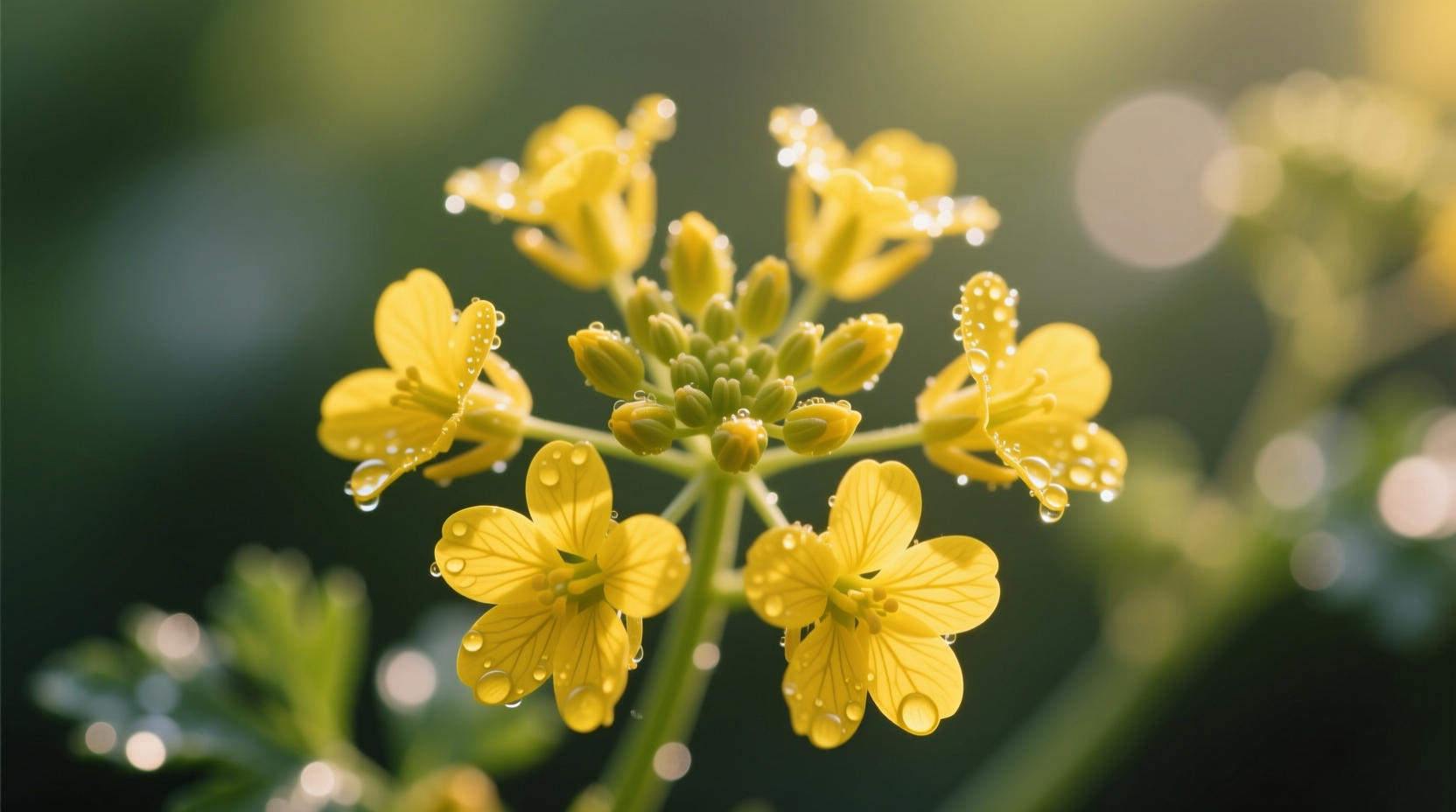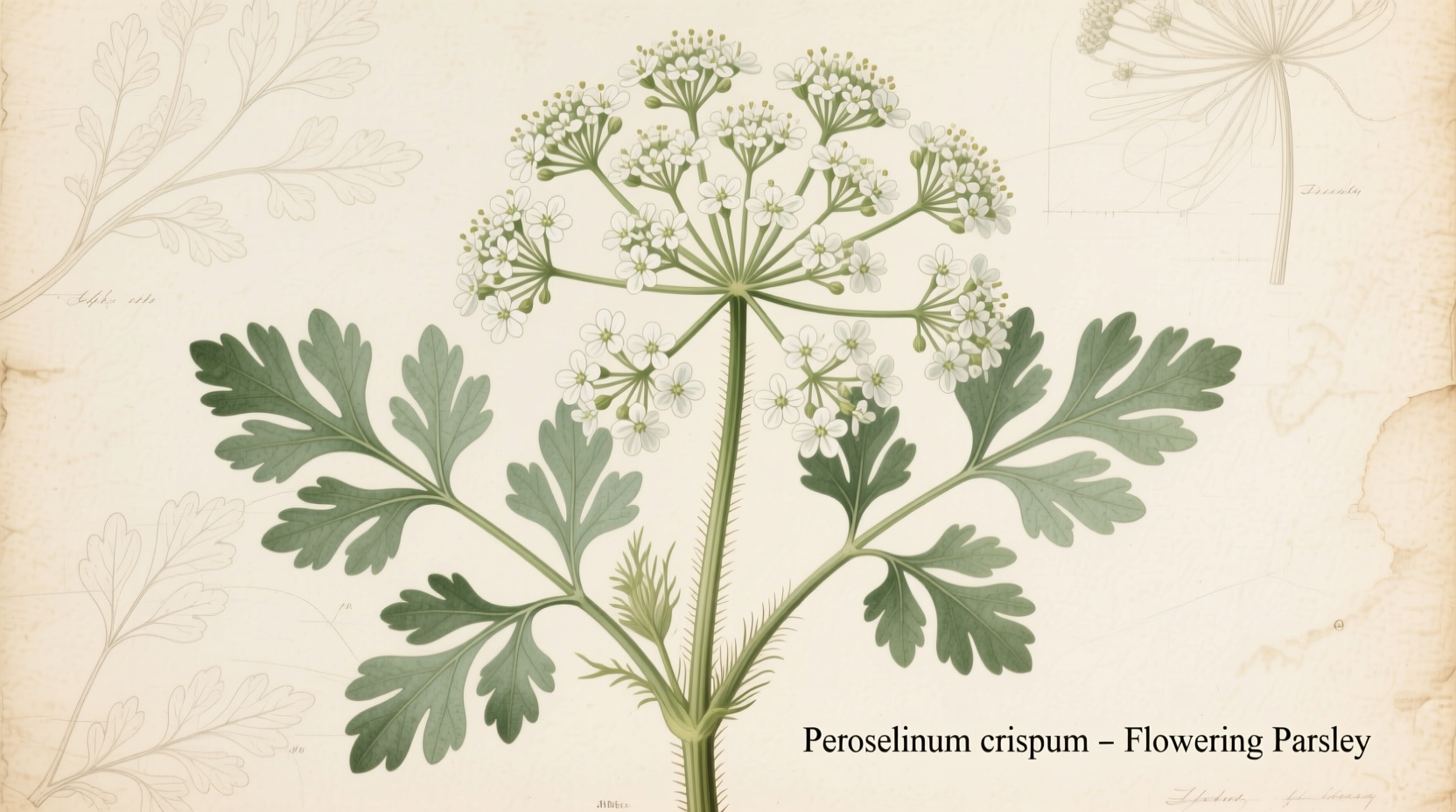Discover exactly what to do when your parsley flowers, whether it's still usable in your kitchen, and how to maximize your harvest through every stage of the plant's lifecycle. This guide delivers practical, science-backed gardening strategies that transform flowering parsley from a disappointment into an opportunity.
Understanding Why Parsley Flowers: The Natural Lifecycle
Parsley (Petroselinum crispum) is a biennial plant, meaning it completes its lifecycle over two growing seasons. During the first year, it focuses energy on producing lush foliage. In the second year, it shifts to reproduction—sending up flower stalks, blooming, and producing seeds before completing its lifecycle.
While this flowering process is natural, premature bolting (early flowering) can occur in the first year due to environmental stressors like:
- Extended periods of temperatures above 75°F (24°C)
- Inconsistent watering or drought conditions
- Poor soil nutrition
- Excessive daylight hours
| Regular Parsley (First Year) | Flowering Parsley (Second Year) |
|---|---|
| Abundant leaf production | Reduced leaf growth |
| Sweet, fresh flavor profile | Bitter, more intense flavor |
| Soft, tender stems | Woody, tough stems |
| Primary focus: vegetative growth | Primary focus: reproduction |
What to Do When You Notice Flower Buds
When you spot the first flower buds forming on your parsley plant, you have several options depending on your gardening goals:
Option 1: Harvest Remaining Leaves Immediately
Flowering triggers biochemical changes that redirect the plant's energy from leaf production to seed development. As this process advances, leaf flavor becomes increasingly bitter. The University of Minnesota Extension recommends harvesting remaining leaves promptly once flowering begins to capture the best remaining flavor.
Option 2: Allow Full Flowering for Seed Production
If you want to save seeds for future planting, allow the flowers to fully develop. The flowers will eventually form small seed clusters that turn brown when mature. According to the Royal Horticultural Society, parsley seeds remain viable for up to 2 years when properly stored in cool, dry conditions.

Option 3: Remove Flower Stalks to Extend Leaf Production
Cutting off emerging flower stalks can sometimes prolong leaf production for several more weeks, though this is less effective with biennials than annual herbs. This technique works best when implemented at the very first sign of bolting.
Using Flowering Parsley: Culinary Applications
While flowering parsley isn't ideal for delicate dishes that require fresh parsley flavor, it still has valuable culinary applications:
- Flowers: The small yellow-green flowers are edible and make attractive, mildly flavored garnishes
- Seeds: Harvest when brown and dry for use as a spice similar to celery seed
- Stems: Woody stems work well for flavoring stocks and soups where texture isn't important
- Leaves: Best used in robust dishes like stews where bitterness can be balanced
Preventing Premature Flowering in Future Crops
While second-year flowering is natural, preventing first-year bolting ensures maximum leaf harvest. Implement these proven strategies:
Temperature Management
Plant parsley early in spring or in late summer for fall harvest to avoid peak summer heat. The Cornell University Gardeners' Handbook notes that consistent temperatures below 75°F (24°C) significantly reduce premature bolting.
Consistent Watering Schedule
Maintain evenly moist soil—neither soggy nor dry. Drought stress is a primary trigger for early flowering. Install drip irrigation or water deeply 2-3 times weekly rather than daily shallow watering.
Variety Selection
Choose varieties bred for slower bolting:
- 'Italian Flat Leaf' - more heat tolerant than curly varieties
- 'Titan' - specifically bred for delayed bolting
- 'Hamburg' - grown primarily for its edible root but flowers later
Parsley Lifecycle Timeline: What to Expect
Understanding parsley's complete lifecycle helps manage expectations and optimize harvests:
| Stage | Timeline | Key Characteristics |
|---|---|---|
| Germination | 2-4 weeks | Slow to sprout; requires consistent moisture |
| Vegetative Growth | Spring to fall (Year 1) | Leaf production; ideal for harvesting |
| Dormancy | Winter (Year 1) | Survives light frosts; dies back in hard freezes |
| Flowering | Spring (Year 2) | Flower stalks emerge; leaf quality declines |
| Seed Production | Summer (Year 2) | Seeds mature; plant completes lifecycle |
When Flowering Indicates a Problem
While second-year flowering is normal, first-year bolting suggests environmental stress. The University of California Master Gardeners program identifies these red flags:
- Flowering before midsummer in the first growing season
- Multiple plants flowering simultaneously in cool weather
- Stunted growth accompanying early flowering
- Yellowing leaves before flower development
These symptoms often indicate improper planting timing, inadequate water, or poor soil conditions that require correction for future plantings.
Harvesting and Storing Parsley Seeds
Collecting seeds from flowering parsley ensures a continuous supply and preserves your preferred variety:
- Monitor seed clusters as they transition from green to brown
- Cut entire seed heads when 70-80% have turned brown
- Dry seed heads in paper bags for 1-2 weeks
- Separate seeds from chaff by rubbing between palms
- Store in airtight container in cool, dark place
Properly stored parsley seeds maintain 60-70% germination rate for up to 2 years, according to research from the Seed Savers Exchange.
Planning Your Parsley Succession
For continuous fresh parsley harvests, implement a succession planting strategy:
- Start new plants from seed every 4-6 weeks
- Replace flowering plants with fresh seedlings
- Grow parsley in partial shade during hot months
- Consider container growing for better temperature control
This approach ensures you always have young, non-flowering parsley available for culinary use while allowing some plants to complete their natural lifecycle for seed production.











 浙公网安备
33010002000092号
浙公网安备
33010002000092号 浙B2-20120091-4
浙B2-20120091-4